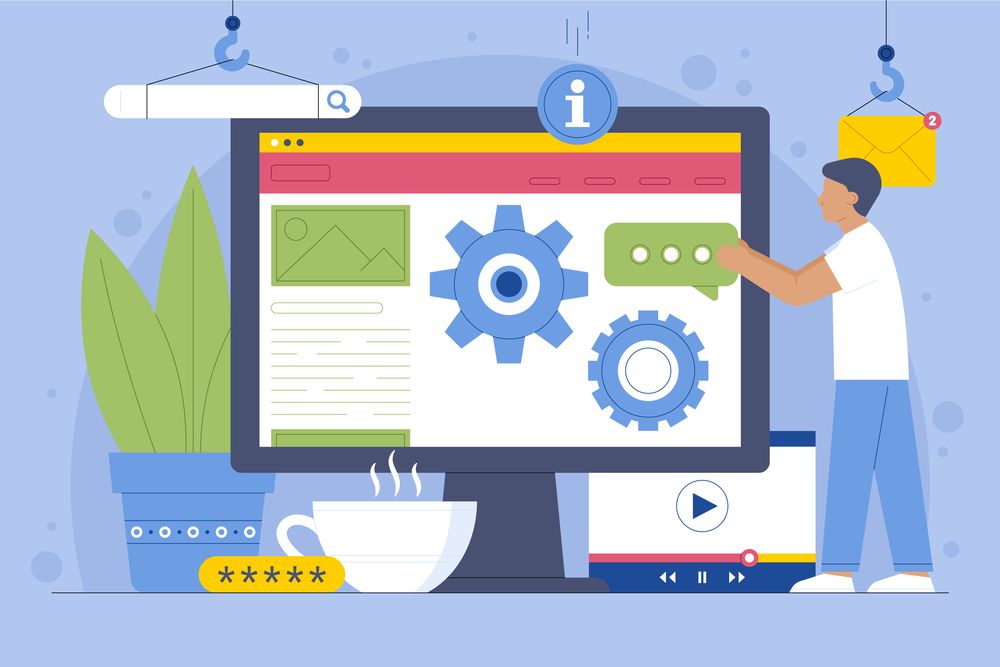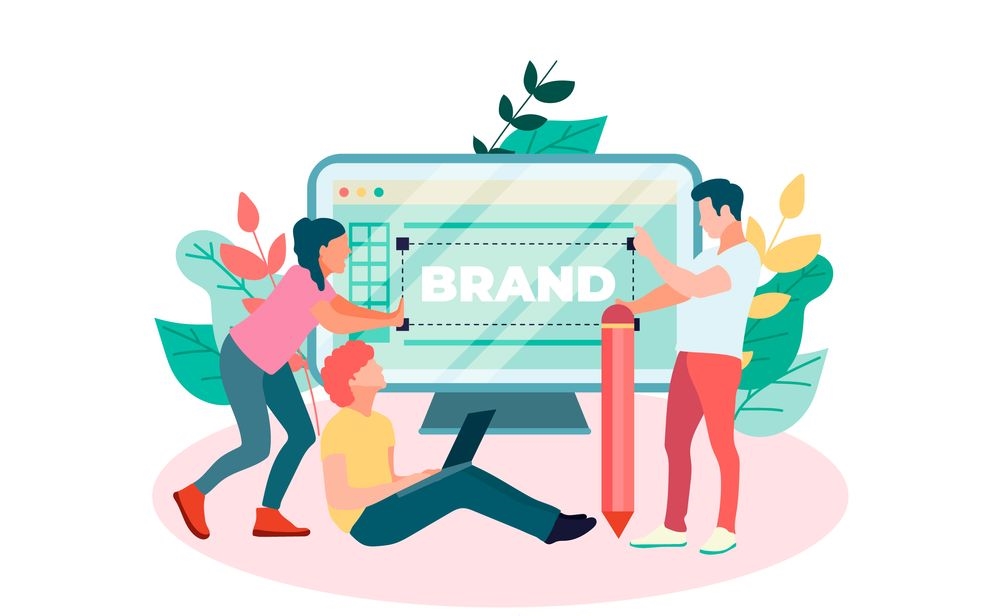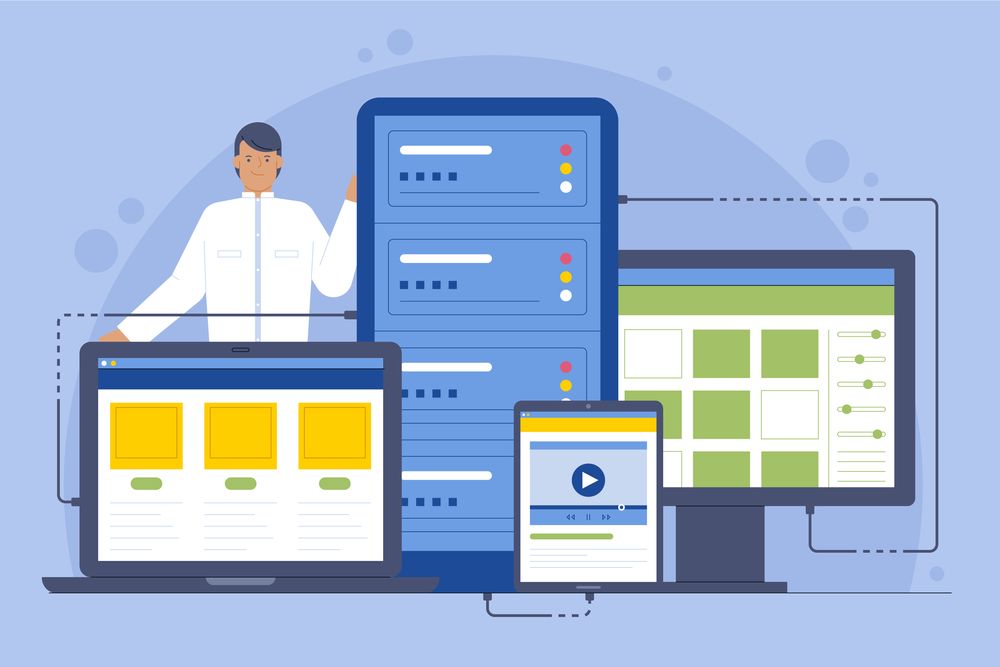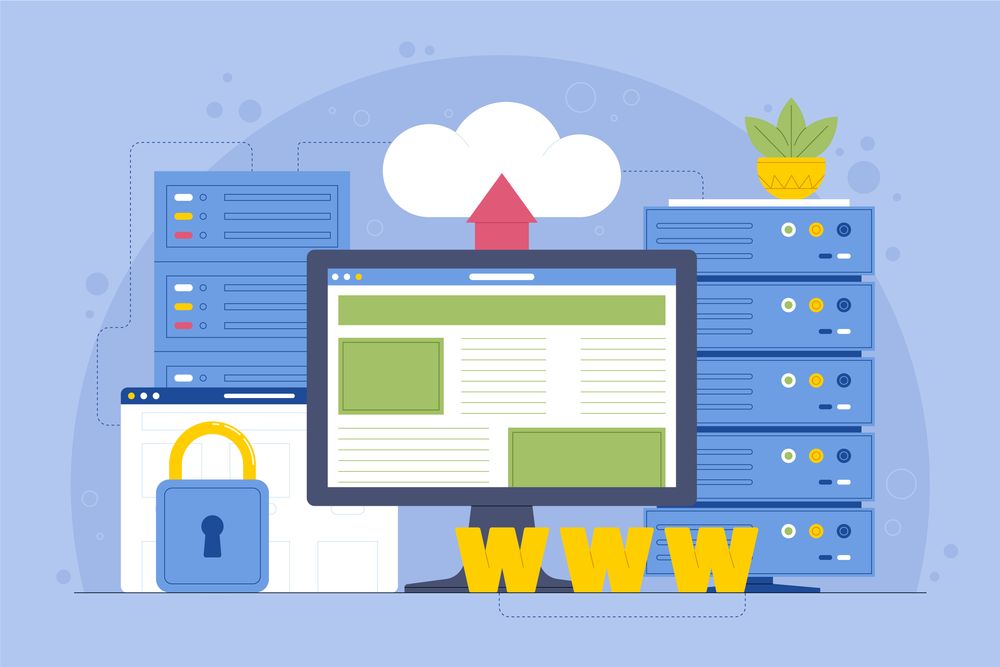Digital marketing doesn’t have to be difficult to understand for the layman. Although, given the numerous terms thrown around, it can be challenging to keep up.
Consider a website and its various content aspects that promote your online business – from the Landing page, About Us page, Contact Us page, Microsites, Home page, Splash page, Service page, Pricing page, Pop-ups, and more.
In this article, we will be differentiating between three crucial aspects of any digital marketing plan, Splash page Vs landing page Vs Home page, to help you better serve your customers and make a favorable impression to ensure a consistent flow of potential customers.
What is a Splash Page and What Purpose Does It Serve?
A splash page is a stand-alone web page, also known plurally as splash screens in most cases, that is typically used to introduce visitors to a website. Splash pages usually include a short message or an eye-catching image, and they may also provide a link to the main website.
Although splash pages are not essential for all websites, they can be an effective way to engage visitors and give them a taste of what the website has to offer. When used correctly, splash pages can help to set the tone for the rest of the site and encourage visitors to explore further.
However, it is important to strike a balance between providing too much information on the splash page and leaving visitors feeling frustrated or confused. In general, the best splash pages are those that are kept simple and to the point.
What Are the Features of a Splash Page?
Splash pages are stand-alone web pages that are designed to grab the attention of visitors and entice them to explore the rest of the website. A typical splash page design features compelling visuals, an engaging headline, and a call to action with relevant content.
When used correctly, splash pages can be an effective way to showcase the best features of a website and encourage users to take the next step. However, it is important to use splash pages sparingly and only redirect users to the splash page when it makes sense in the user journey.
When used excessively or without careful consideration, a website splash page can frustrate users and damage the overall user experience.
Design Elements of a Splash Page
A splash page, or splash screen, is the first page of a website that people see when they visit. Your goal is to create a standalone page that is visually appealing, easy to understand, and that encourages visitors to take the next step. So, what goes onto a splash page?
There are three crucial elements that make a great Splash Page:
Stunning Visuals
High-quality visuals are essential for a good splash page. Make sure your images are clear and eye-catching, and that they accurately represent your brand.
Copy – Minimal but Informative
Copy is also important, but less is more. Integrate minimal copy and to the point text, highlighting only the most important information.
Impactful CTA
Finally, make sure your CTA is strong and effective. It should be clear and concise, and it should tell visitors what you want them to do next.
With a little thought and effort, you can create an effective splash page that will help your business succeed.
What Are the Benefits of a Splash Page?
As a standalone web page, the splash page is a great way to capture your visitors’ attention with personalized effort. It can also be used to promote special offers or to provide information about your website or company. Splash pages are typically designed to be eye-catching and visually appealing so that visitors will want to stay on your site.
A few splash page advantages include:
- Allowing you to control the first impression that visitors have of your website
- Helping you to focus visitors’ attention on a particular message
- Making it easy to promote special offers or drive traffic to specific pages on your site
- Giving you an opportunity to show off your creativity and branding
- Increasing the overall stickiness of your website
- Make the process of gathering feedback easier on customer preferences
Do you want to create an effective splash page, landing page or homepage?
What is a Landing Page and What Purpose Does It Serve?
A landing page is a web page that is designed to capture a site visitor’s attention and convert them into a lead or customer. Landing pages are typically used in conjunction with search engine marketing (SEM) or pay-per-click (PPC) marketing campaigns and can be customized to target a specific audience or keywords.
The purpose of a landing page is to encourage visitors to take action, such as filling out a form, downloading a white paper, or making a purchase. A well-designed landing page directs visitors with a clear call-to-action (CTA) that encourages them to take the next step.
Landing pages are an important part of any online marketing campaign, as they can help you increase conversions and generate leads. If you’re not using landing pages, you’re missing out on a valuable opportunity to engage with your website visitors and convert them into customers.
What Can You Feature on a Landing Page?
There are a few key design elements that you’ll want to include on your landing page in order to entice visitors and help search engines find your site.
First, you’ll want a welcome screen that briefly informs visitors about what you have to offer. You’ll also want to make sure your page is easy to navigate and includes clear calls to action. Finally, you’ll want to use persuasive copy and images to convert visitors into leads or customers. So, in short, you’ll need:
- A clear and concise headline that tells visitors what they will get by converting
- Compelling copy that speaks to the needs of your target audience
- A strong call-to-action (CTA) that encourages visitors to take action
- Eye-catching and relevant high-quality images or videos
- A form, either feedback or a subscription form, that is easy to fill out and submit
By including these key design elements, you can create a landing page that will help you achieve your business goals.
What Are the Benefits of a Landing Page?
A landing page is a crucial element of any website. It’s the first page that visitors see when they arrive at your site, and it’s what directs them to the rest of your content.
A well-designed landing page can be the difference between a website that converts visitors into customers, and one that doesn’t. Here are four benefits of using a landing page on your website:
1. A landing page helps you focus your message
When you have a specific goal for your website, it’s important to make sure that all of your content is focused on achieving that goal. A landing page allows you to do this by distilling your message down to its essence, and providing a clear call-to-action for your visitors.
2. A landing page can improve your conversion rate
If you’re looking to increase the number of leads or sales generated by your website, then a landing page can be a big help. By providing a focused, targeted experience for your visitors, you can increase the likelihood that they’ll take the action you want them to.
3. A landing page can be a great testing tool
If you’re not sure what’s working and what isn’t on your website, a landing page can be a great way to test different messages and call-to-actions. By creating multiple versions of your landing page, you can see which one performs better and make changes accordingly.
4. A landing page can save you time and money
Creating a separate landing page for your website can save you time and money in the long run. Rather than having to design and develop an entirely new website with unique visual elements, you can simply create a landing page that can be used as a standalone experience. This can be a great way to test new ideas without having to commit to a full website redesign.
If you’re looking to improve your website and generate more leads or sales, then a landing page can be a great solution. Keep these benefits in mind as you consider whether or not a landing page is right for your business.
What is a Homepage?
Your homepage is the first page that appears when you visit a website just like a welcome screen. It’s like the cover of a book, and it should give visitors a general idea of what the site is about. A good homepage will be clear and concise, easy to navigate, and relevant to the rest of the site.
Most homepages have a few common elements, such as a header, navigation bar, and footer. The header is typically the name of the website or company, and it may include a company logo. The navigation bar helps visitors find their way around the site, and the footer usually contains contact information or copyright notices.
The content of a home page should be carefully considered. It should be well-written and relevant to the rest of the site. Homepages are often used to promote special offers, services or an upcoming event, so it’s important to make sure that the information is up-to-date and accurate. Images can also be used on the home page, but they should be used sparingly. Too many images can make a page seem cluttered and confusing.
What Can You Find on a Homepage?
The content on your home page needs to tell visitors what you do, what you’re about, and why they should care. Your home page is the most important part of your website when it comes to helping people understand what you do – so make sure every word counts.
Your home page should:
- Clearly state what you do
- Be easy to read and understand
- Include a call to action
- Be well designed and visually appealing
- Load quickly
If your home page doesn’t do all of these things, then you’re likely losing visitors before they even have a chance to see what you have to offer.
So, How Do You Create a Great Home Page?
Here are some tips:
-Keep it simple: Use clear, concise language and avoid using jargon.
-Get to the point: State what you do and why people should care right away.
-Use strong visuals: High-quality images and videos can help tell your story and attract attention.
-Be user-friendly: Make sure your page is easy to navigate and includes a call to action.
-Optimize for speed: No one likes a slow website, so make sure your home page loads quickly.
Following these tips, you can create a home page that will engage and convert visitors into customers or clients.
What Benefits Does a Homepage Offer?
A home page is where visitors get all the information regarding your business, from how your journey began to your achievements to all the challenges you’ve overcome and the services you now specialize in.
That’s why it’s so important to make sure your home page is informative, engaging, and easy to navigate.
When you create a home page as a standalone page with information easily accessible to all, it creates an outstanding first impression thereby engaging visitors into wanting to know more about you and connect further.
Increase your conversions with effective splash pages and landing pages now!
Splash Page Vs Landing Page Vs Home Page – A Summarized Differentiation
When you’re planning marketing campaigns, it’s important to make a great first impression. And one of the best ways to do that online is with an effective splash page, landing page, or homepage. But what’s the difference between these three digital marketing concepts? Here’s a closer look.
Splash Page
A splash page is typically a stand-alone page that’s used to promote a specific marketing campaign or event. It’s designed to grab attention and make a strong impression, often with eye-catching visuals and an engaging message.
Landing Page
A landing page, on the other hand, is focused on conversion. Its goal is to get visitors to take a specific action, such as signing up for a newsletter or making a purchase. A well-designed landing page will have a clear call-to-action and persuasive copy that convinces visitors to take the desired action.
Home Page
Finally, a homepage is the main page of a website. Its purpose is to give visitors an overview of what the site has to offer and help them find the information they’re looking for. A good homepage will be well-organized and easy to navigate, with clear links to the most important pages on the site.
Final Thoughts About Splash Page vs Landing Page vs Homepage
So, when should you use a splash page, a landing page, or a homepage? It depends on your marketing goals. If you’re looking to make a big splash and grab attention for a new product or campaign, a splash page is probably your best bet. If you want to increase conversions by getting visitors to take a specific action, then a landing page is the way to go. And if you need an effective home base for your website that will help visitors find what they’re looking for, then a well-designed homepage is essential.
No matter which type of page you’re creating, remember that simplicity is key. Keep your message clear and your design clean, and you’ll be sure to make a great impression.
If you’re looking to take your marketing efforts to the next level, Growth Hackers is where you should head next. We are successful digital marketing experts specialized in helping businesses gain organic growth in the competitive online market.
Our brand is committed to helping you reach your intended audience, get leads, and increase revenue through efforts and marketing tactics that resonate memorably with your consumer base. Find us here and contact Growth Hackers today to get started on the path to greater digital success







